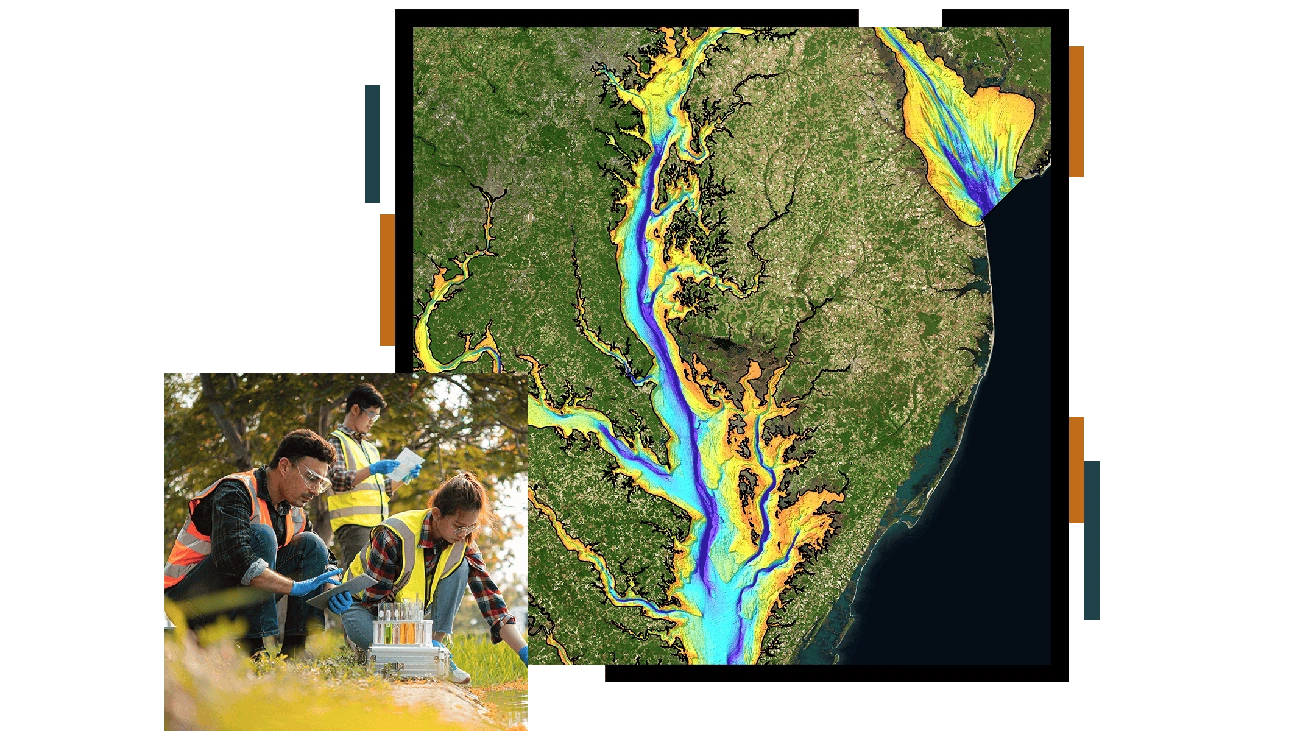Your project timeline depends on environmental clearance. When development teams juggle regulatory requirements, stakeholder consultations, and impact predictions, delays aren’t just frustrating: they’re costly.
Environmental impact assessments determine whether your projects can proceed without causing severe ecological damage. Large-scale developments—power plants, infrastructure corridors, extraction operations—face mandatory assessment requirements. The goal is to identify problems early enough to fix them, not after construction begins.
Most jurisdictions now require EIA for projects with significant environmental footprints. Stakeholder engagement sits at the center of this process. The EU has refined its EIA framework four times over nearly four decades, adapting to evolving environmental priorities.
Cette expertise transforms regulatory compliance from an obstacle into a strategic advantage. The correct assessment approach saves time, reduces costs, and builds stakeholder confidence in your project outcomes.
Understanding the Role of EIA in Sustainable Development
Les projets complexes créent des risques complexes. EIA practitioners face mounting pressure to predict environmental consequences across multiple timescales, from immediate construction impacts to decades of operational effects.
Environmental Impact Assessment evaluates potential ecological effects before project implementation. The UN Environment Program positions EIA as a decision-making tool that identifies environmental, social, and economic impacts before approval. Your assessment examines:
- Air, water, and soil quality changes
- Biodiversity and ecosystem disruptions
- Human health and community impacts
- Short-term construction versus long-term operational effects
The process moves through screening, scoping, impact prediction, mitigation planning, and reporting stages. EIA practitioners operate between communities, developers, and environmental regulators. The data guides strategic choices: sustainable materials, habitat-preserving designs, and energy-efficient systems that align projects with development goals.
Climate change reshapes EIA requirements
Climate considerations now drive assessment protocols. Many EIA regimes mandate climate change evaluation, though approaches vary significantly across jurisdictions.
The 2014 EIA Directive acknowledges that “climate change will continue to cause damage to the environment and compromise economic development”. Your assessments must evaluate both project emissions and vulnerability to climate effects.
Research across 19 EIA regimes reveals that fewer frameworks address climate adaptation compared to emissions mitigation. Projects must now demonstrate resilience against extreme weather events throughout operational lifespans. Cette évolution change how you design, assess, and approve developments.
France-Italy rail disruption: when geology strikes back
Août 2023: 15,000 cubic meters of rock crashed down near Modane, blocking the crucial France-Italy rail link through the French Alps. The rockfall suspended train services through the Fréjus tunnel, cutting the connection between St Michel de Maurienne and Modane.
Nineteen months of remediation work by local authorities and SNCF Réseau cost €13 million before services resumed in March 2024. The incident demonstrates how geological vulnerabilities—potentially identifiable through thorough EIA—can devastate cross-border infrastructure.
Environmental assessment delivers social value to communities and economic returns to investors without depleting natural capital. Despite procedural challenges, EIA remains essential as climate change amplifies environmental vulnerabilities across all development sectors.
Legal Framework and EU EIA Directive Requirements
Regulatory compliance shapes every major development decision in Europe. The EU’s Environmental Impact Assessment Directive doesn’t just set minimum standards: it determines which projects move forward and which face delays, additional costs, or outright rejection.
Understanding these requirements early prevents costly surprises later in your project timeline.
Overview of the EIA Directive (2011/92/EU as amended by 2014/52/EU)
The directive has evolved since 1985, with the 2011 version (2011/92/EU) consolidating previous amendments and the 2014 update (2014/52/EU) modernizing the entire assessment process. This evolution reflects changing environmental priorities across member states.
Core requirements cover project classification, developer obligations, assessment content, and public participation standards. Projects with significant environmental impacts must complete a thorough evaluation before receiving development consent.
The 2014 amendments streamlined procedures by focusing on truly significant impacts rather than bureaucratic box-ticking. New requirements address climate vulnerability, biodiversity protection, disaster risk assessment, and expanded environmental factors.
Mandatory EIA thresholds and project types
Two project categories determine your assessment obligations:
Annex I Projects require mandatory EIA regardless of scale or location. Nuclear facilities, major railways, motorways, hazardous waste installations, and large dams fall into this category. No exceptions, no case-by-case review.
Annex II Projects face assessment based on member state thresholds or individual examination. Urban developments, industrial facilities, wind farms, and tourism projects typically require case-by-case screening.
Member states use varying approaches—many employ traffic light systems with inclusion thresholds (always required), exclusion thresholds (never needed), and indicative thresholds (depends on specifics). The challenge is that identical projects might require mandatory assessment in one country but only screening in another.
Implementation variations across EU member states
Member states implement the directive through national legislation while maintaining flexibility in application. This creates significant practical differences for project developers.
Screening procedures vary dramatically: few countries involve public consultation in screening decisions, treating it as purely a technical determination. Annual EIA volumes differ substantially between countries due to inconsistent monitoring systems [11]. Alternative analysis requirements range from comprehensive to minimal across jurisdictions.
Cross-border projects add complexity. Germany manages transboundary requirements through bilateral agreements with the Netherlands, France, Switzerland, and Poland, following the Espoo Convention framework. The 2017 amendments aimed to streamline procedures while maintaining protection standards, but implementation differences persist across the EU.
Five Key Stages of the Environmental Impact Assessment Process
Environmental assessments don’t happen by accident. Each stage serves a distinct purpose: filtering projects, identifying risks, predicting outcomes, preventing damage, and ensuring compliance.
Screening: Determining if an EIA is required
Most development proposals pass through screening without requiring full assessment [15]. The majority have minimal environmental impact, while only large-scale projects demand comprehensive evaluation.
Two screening approaches exist: standardized methods using legal categories, and case-by-case evaluation for unique situations. Projects fall into clear categories—high-impact developments requiring mandatory assessment, low-impact projects needing no review.
Scoping: Identifying key environmental issues
Scoping defines what gets assessed and what gets reported. This process identifies critical issues relevant to your specific project and regulatory context. Early stakeholder engagement—communities, authorities, specialists—determines assessment quality.
Effective scoping documents include project rationale, feasible alternatives, applicable regulations, stakeholder mapping, consultation methods, and assessment methodology.
Impact Assessment: Predicting and evaluating effects
Impact assessment forms the analytical core of environmental evaluation [19]. This stage examines environmental and social impacts against baseline conditions, covering direct and indirect effects. Assessments combine qualitative rankings and quantitative measurements.
Mitigation: Proposing measures to reduce impacts
Mitigation prevents, reduces, or controls adverse effects through replacement, restoration, or compensation. The hierarchy prioritizes enhancement first, then avoidance, minimization, remediation, and finally compensation for unavoidable impacts.
Monitoring: Ensuring compliance post-approval
Monitoring tracks environmental performance throughout project lifecycles. This stage verifies compliance with approval conditions and confirms mitigation effectiveness. Post-approval monitoring reveals whether predicted impacts match reality and whether protective measures work during all phases.
Enforcement teams and community monitors share responsibility for oversight, creating opportunities for indigenous and local participation in follow-up activities.
Expert Methods for Accurate EIA Reporting
Technical precision determines regulatory approval. When assessment teams rely on outdated methods or incomplete data, reports fail under scrutiny—and projects stall.
Using GIS and spatial data for site analysis
Geographic Information Systems integrate data, hardware, software, methods, and people into comprehensive technical systems for environmental analysis. This technology collects, stores, and analyzes geographic data, creating digital mapping products that visualize environmental impacts across landscapes. GIS applications assign different weights to ecological factors based on their relative importance, transforming overlay analysis into quantitative tools.
Spatial analysis reveals patterns invisible in text-based assessments: corridors of high environmental sensitivity, areas of potential cumulative impacts. The data speaks before you submit.
Baseline data collection and environmental modeling
Baseline data serves as your reference point for measuring environmental changes from development projects. Cette information encompasses several categories:
- Physical data: topography, soil properties, geological characteristics
- Chemical data: air, water, noise, and soil pollution levels
- Biological data: biodiversity, flora, fauna, ecosystems
- Socioeconomic data: demographics, economic conditions
Environmental modeling improves understanding of natural systems and their reactions to changing conditions. Models summarize and disseminate this understanding while enabling quantitative experimentation into the effects of various proposed responses. Your predictions gain credibility through systematic modeling approaches.
Stakeholder consultation and public participation
Timely and broad-based stakeholder involvement represents a vital ingredient in accurate EIA reporting. EIAs that failed to be inclusive typically had less influence over planning and resulted in higher social and environmental costs. Effective participation should begin at early project stages, especially during scoping and impact assessment phases.
Participation ranges from passive (informing stakeholders) to interactive (joint problem-solving) and self-mobilization. Intelligent engagement prevents opposition later.
Structuring an Environmental Impact Assessment report
Well-organized EIA reports improve environmental information presentation through clear structure and visual elements. Reviewers must understand report assumptions, check compliance with regulatory requirements, and evaluate proposed mitigation measures. Effective reports incorporate charts, graphs, and infographics to make complex environmental data accessible to diverse stakeholders.
Structure determines whether your assessment convinces decision-makers or confuses them.
Benefits and Challenges of Implementing EIA Guidelines
Large-scale projects come with their own set of challenges: shifting regulations, multiple stakeholders, and tight budgets. Our approach doesn’t add another layer of complexity — it turns these challenges into tangible opportunities.
Improved decision-making and risk mitigation
Effective EIA implementation identifies environmental risks before they become project killers. Teams that integrate thorough assessments can prevent costly damage through proactive planning, rather than relying on reactive fixes. Studies demonstrate savings of up to 20% in project costs when EIAs guide early decision-making, avoiding delays and regulatory penalties. Risk quantification within EIAs assesses both occurrence likelihood and consequence severity, turning uncertainty into manageable data.
Transparency and stakeholder trust
Public participation builds trust between project teams and communities, reducing conflicts during approval phases. EIAs with broad stakeholder engagement create more influential assessment processes that deliver greater environmental and social benefits. Projects that exclude key voices face higher social and ecological costs down the line.
Challenges in cross-border and large-scale projects
Complex documentation can overwhelm stakeholders rather than inform them. Assessment procedures contain inherent uncertainties that clash with other planning requirements. Cross-border projects multiply these challenges, demanding coordination agreements between neighboring jurisdictions. Despite best efforts, approximately 50.4% of surveyed researchers still consider EIA procedures ineffective.
Because in the end, a well-executed environmental assessment belongs to your team — and to the lasting success of your projects.
Conclusion
Environmental assessment isn’t just regulatory compliance: it’s project intelligence. When development teams understand environmental risks upfront, they avoid costly surprises, stakeholder conflicts, and project delays that can derail timelines and budgets.
The stakes have grown higher with climate change considerations. Your EIA must now address both emission impacts and project vulnerability to changing conditions. The France-Italy rail disruption shows what happens when geological risks aren’t properly assessed: 19 months of repairs, €13 million in costs, and suspended cross-border services.
Legal frameworks like the EU EIA Directive provide the roadmap, but execution determines success. The five-stage process—screening through monitoring—ensures nothing critical gets overlooked. Expert methods using GIS technology, robust baseline data, and stakeholder consultation turn regulatory requirements into competitive advantages.
Proper EIA implementation can reduce project costs by up to 20% through early risk identification. More importantly, it fosters stakeholder trust and regulatory confidence, enabling projects to move forward without friction.
Environmental Impact Assessments represent strategic project management, not bureaucratic obstacles. They deliver the environmental intelligence that protects both your project investment and the communities where you operate. The documentation complexity and cross-border coordination challenges are real, but the alternative—unidentified risks that emerge during construction—costs far more.
Finally, environmental assessment serves your project’s success while respecting the landscapes and communities that host your work.
Key Takeaways
Environmental Impact Assessment (EIA) guidelines provide essential frameworks for balancing development needs with environmental protection, ensuring projects undergo systematic evaluation before implementation.
• EIA follows a structured five-stage process: screening, scoping, impact assessment, mitigation, and monitoring to ensure comprehensive environmental evaluation and compliance.
• Climate change considerations are now mandatory in EIAs, requiring assessment of both project emissions and vulnerability to changing environmental conditions.
• Expert methods like GIS technology and stakeholder consultation significantly improve assessment accuracy and help identify environmental risks early in project development.
• Proper EIA implementation can save up to 20% in project costs by preventing delays, avoiding regulatory penalties, and reducing environmental damage through proactive planning.
• EU EIA Directive provides a comprehensive legal framework with mandatory assessments for high-impact projects and case-by-case evaluation for medium-impact developments across member states.
When executed effectively, EIA guidelines serve as bridges between development aspirations and environmental stewardship, delivering social and economic value while preserving natural capital for future generations.
FAQs
Q1. What are the main stages of an Environmental Impact Assessment (EIA)? An EIA typically involves five key stages: screening to determine if an assessment is needed, scoping to identify key issues, impact assessment to predict and evaluate effects, mitigation planning to reduce impacts, and monitoring to ensure compliance after project approval.
Q2. How does climate change factor into modern EIAs? Modern EIAs must now assess both a project’s impact on climate through greenhouse gas emissions and its vulnerability to climate change effects. This dual consideration helps ensure projects are both environmentally responsible and resilient to changing conditions.
Q3. What tools do experts use to improve EIA accuracy? Experts utilize Geographic Information Systems (GIS) for spatial analysis, conduct thorough baseline data collection, employ environmental modeling, and engage in comprehensive stakeholder consultation to enhance the accuracy and effectiveness of EIAs.
Q4. How can EIAs benefit project development? EIAs can improve decision-making, mitigate environmental risks, and potentially save up to 20% in project costs by preventing delays and avoiding regulatory penalties. They also increase transparency and stakeholder trust through public participation.
Q5. What challenges are associated with implementing EIA guidelines? Challenges include the complexity of EIA documentation, which can hinder stakeholder engagement, inherent uncertainties in the assessment process, and difficulties in implementing EIAs for cross-border and large-scale projects. These factors can sometimes limit the effectiveness of EIA procedures.





